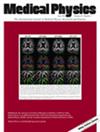Semantic-consistent diffusion model for unsupervised traumatic brain injury detection and segmentation from computed tomography images
Abstract
Background
Unsupervised traumatic brain injury (TBI) lesion detection aims to identify and segment abnormal regions, such as cerebral edema and hemorrhages, using only healthy training data. Recent advancements in generative models have achieved success in unsupervised anomaly detection by transforming abnormal patterns into normal counterparts. However, current mask-free image generators often fail to maintain semantic consistency of anatomical structures during the restoration process. This limitation negatively impacts residual-based anomaly detection, particularly in cases where structural deformations occur due to the mass effect of TBI lesions.
Purpose
This study aims to develop a semantic-consistent, unsupervised TBI lesion detection and segmentation method that minimizes false positives by preserving normal tissue consistency during the image generation process while addressing mass effect-related tissue deformations.
Methods
We propose the semantic-consistent diffusion model (SCDM) for unsupervised TBI lesion detection, focusing on the localization and segmentation of various lesion types from noncontrast CT scans of TBI patients. Leveraging the high-quality image generation capabilities of unconditioned diffusion models (DM), we introduce a normal tissue retainment (NTR) regularization to ensure that normal tissues remain unaltered throughout the iterative denoising process. Furthermore, we address normal tissue compression and deformation caused by the mass effect of TBI lesions through diffeomorphic registration, reducing erroneous activations in residual images and final lesion maps.
Results
Extensive experiments were conducted on three publicly available brain lesion datasets and one internal dataset. These datasets comprised 75, 51, 92, and 56 CT scans, respectively. Thirty seven CT scans without TBI lesions were used for training and validation, while the remaining scans were used for testing. The proposed method achieved average DSC of 0.56, 0.51, 0.47, and 0.52 and AUPRC of 0.57, 0.48, 0.53, and 0.50 on the BCIHM, BHSD, Seg-CQ500, and internal datasets, respectively, surpassing state-of-the-art unsupervised methods for TBI lesion detection and segmentation. An ablation study validated the effectiveness of the proposed NTR regularization and diffeomorphic registration-based mass effect simulation.
Conclusions
The results suggest that the proposed SCDM enables effective TBI lesion detection and segmentation across diverse TBI CT scans. It significantly reduces false positives by addressing inconsistencies in normal tissue during the iterative image restoration process and mitigating mass effect-induced tissue deformations.

 求助内容:
求助内容: 应助结果提醒方式:
应助结果提醒方式:


